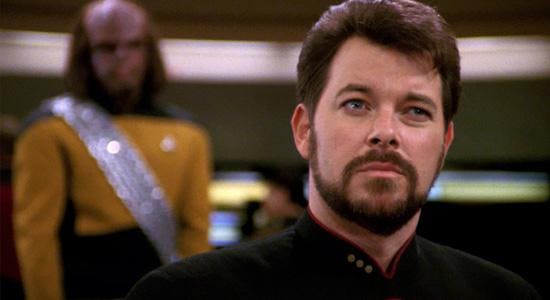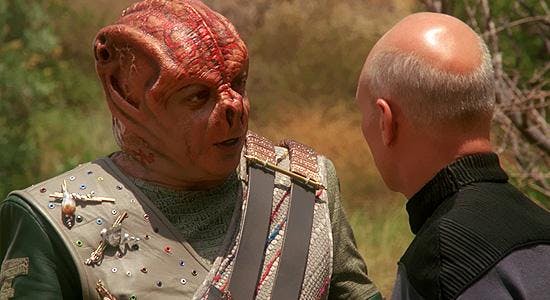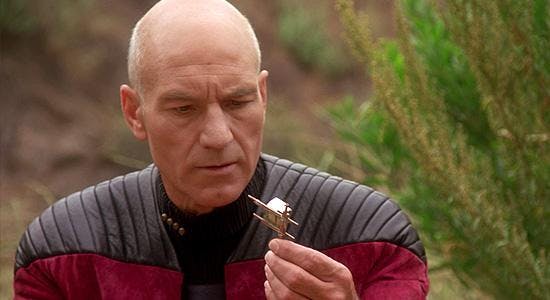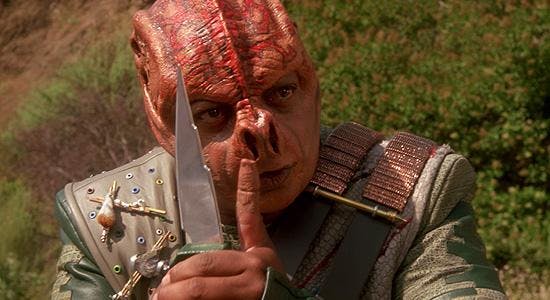
Philosopher Paul Ricoeur writes that myths are not simply false stories or untrue versions of history. While they are not simply equitable with history, they ought to be understood as the narratives that define the heritage and life of a community. They shape communal identity and help constitute a national sense of self. Ricoeur notes that myths are told in universal terms. We are all intended to see ourselves in these narratives and employ them to help us better understand ourselves and the world. He argues that in aiding the construction of our societal selves a myth "confers upon this experience an orientation” and a trajectory. It sets us on a path and shapes who we are. Myths inform us and help us determine where we go. In doing so, myths address the fundamental enigmas of our existence and help us try to make sense of our lives.

In the fan-favorite Star Trek: The Next Generation episode, “Darmok,” Captain Picard and the Enterprise crew are confronted by a mysterious and bewildering alien culture known as The Children of Tama. The Tamarians communicate through metaphors drawn from their own mythologies and founding narratives. This presents problems for the Starfleet crew, who know neither the meaning of the metaphors nor the originating stories from which they are drawn. Communication is impossible and eventually leads to rising tensions between Riker and the first officer of the Tamarian vessel.
Despite the myriad problems in communication, this is exactly why the Tamarian Captain has come. He is determined to establish a means of dialogue and is willing to jeopardize relations by kidnapping Captain Picard in order to so. What Picard does not initially realize, but would soon grow to learn, is that the Tamarians’ identity and sense of self are inextricably constituted and shaped by their own cultural myths. The stories of Darmok and Jalad become the interpretive lens by which they make sense of the world and they struggle to communicate with others who do not share that heritage.

This draws the audience to contemplate the manner in which their own national assumptions are shaped by their cultural myths and stories. Was our nation forged in revolution and war? Was it brought about through negotiation, compromise, and treaty? How do these origins and the way we narrate them affect our sense of self and national identities? How have these narratives shaped the trajectory of our cultural lives?
When we first meet the Children of Tama, the Tamarian captain and his first officer appear to have a disagreement over the course of action. While we do not comprehend the specifics of their dispute, it seems apparent that the first officer had a different reading of both their situation and which stories ought to govern their actions toward the Enterprise. The Tamarian captain begins communicating with the Federation ship by citing “Rye and Jyrie at Lunga.” The audience never learns more of these figures or how their story shapes Tamarian culture. It is only after the first failed attempt to communicate that the Tamarian captain cites Darmok, to which his first officer responds with protest. It seems that Darmok and Jalad at Tanagra was a second option, perhaps an alternative sub-history. I imagine that the attempt to gain friendship with Picard through facing a common enemy is an alternative myth or history that the Captain chose to emphasize and bring to the fore at the protest of his first officer.

Each of our nations also have such alternative histories and myths. In Canada, the celebration of “Canada 150” is made complex by the history of a colonizing relationship with our Indigenous people and nations. Many European countries also have colonial histories. In America, there is the history of the trail of tears alongside the histories of slavery and segregation that trouble the dominant cultural myths we share. I imagine Darmok and Jalad to be such an alternative myth that, when told and allowed to shape the actions and perspective of the Tamarian captain, allowed new friendships and cultural growth to occur.
After the events unravel with the Tamarian captain becoming injured at the hands of the creature at El-Adrel, Picard recounts the Epic of Gilgamesh for his wounded friend. The Epic of Gilgamesh is an ancient Mesopotamian myth that shaped ancient cultures beyond a single nation. This is the originating story that provided much of the source material for the Hebrew myth of the flood found in the Torah. Despite Picard’s insistence that he is not much of a storyteller, he proceeds to recount the heroism and friendship between Gilgamesh and Enkidu. These founding myths shaped human societies and continue to impact our ideas of valor, dedication, and adventure. The stories we use to construct our national and communal selves continue to impact not just individuals, but policy, culture, and countries.

The Tamarian captain was not only acquainted with the dominant myths of Rye and Jyrie, but also the sub-altern myths of Darmok. He allowed Darmok to change him and his approach to others in such a way that allowed for new ways of communicating and the forging of new friendships. It is in listening to new and alternative stories, in addition to those we know well, that growth and maturation occurs. At the close of the episode, Picard is reading the Homeric hymns. His encounter with the Tamarians reminded him that becoming acquainted with our own founding myths and learning to recognize how these stories continue to influence and shape us is essential for self-awareness. Even more important is the recognition that how our own founding myths and metaphors shape indelibly how we see the world and communicate with others. The Tamarian captain desired connection and communication at the cost of his life. He desired to not only share his stories, but to learn human stories such as Gilgamesh. It is in this dialogue and sharing of ourselves that genuine encounter occurs.
Timothy Harvie is Associate Professor of philosophy and ethics at St. Mary's University in Calgary, Canada. His interests lie primarily in philosophical theology, political philosophy, environmental and animal philosophies, and ideas of the role of hope in society. He is a lifelong Star Trek fan. http://www.stmu.ca/dr-timothy-harvie/

